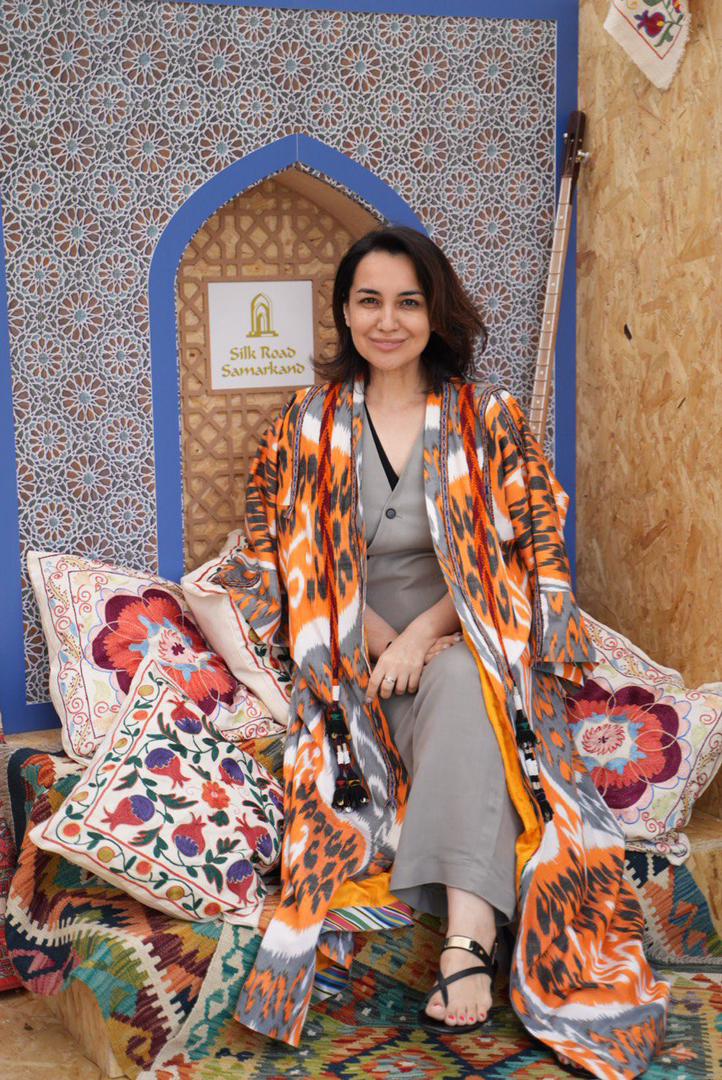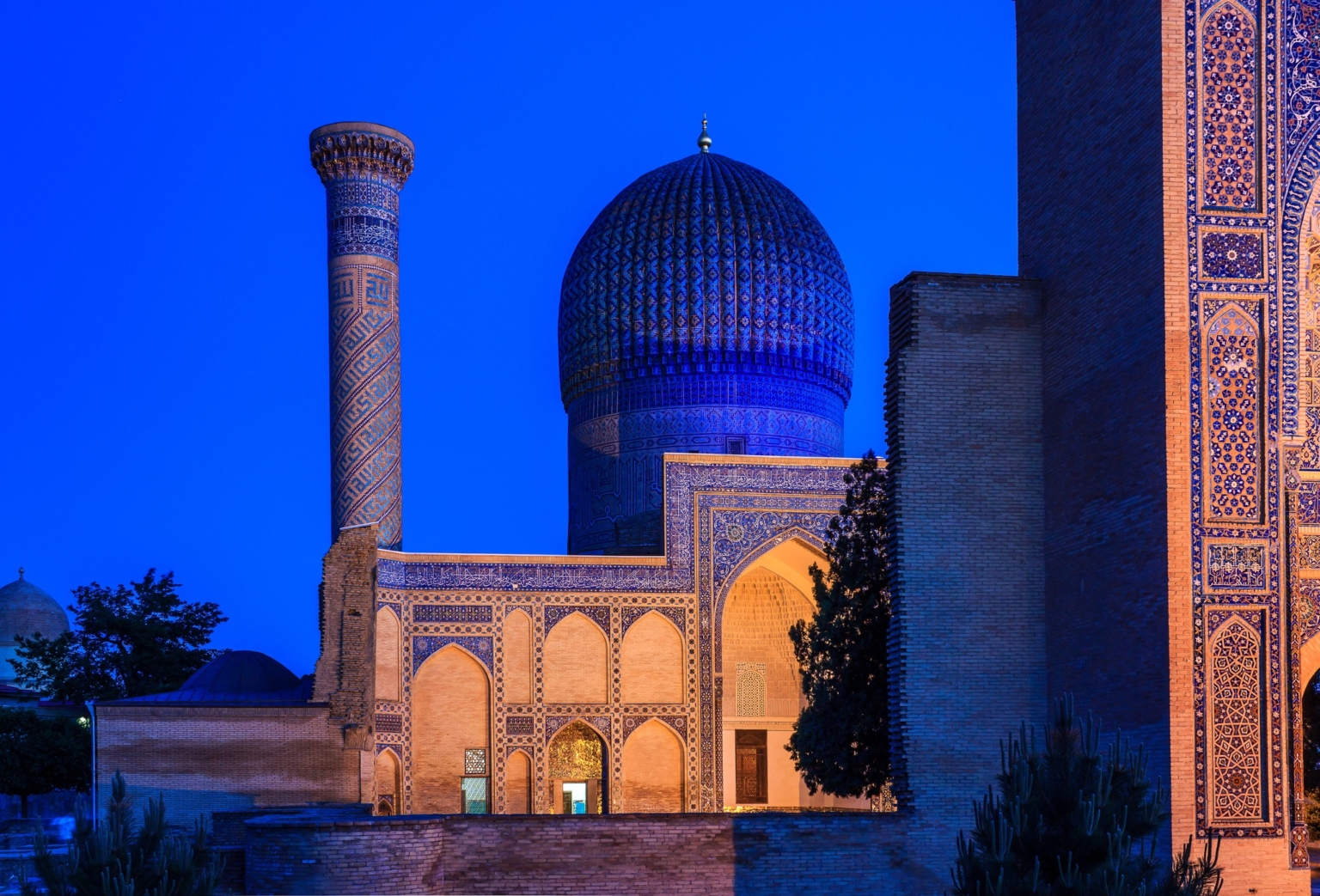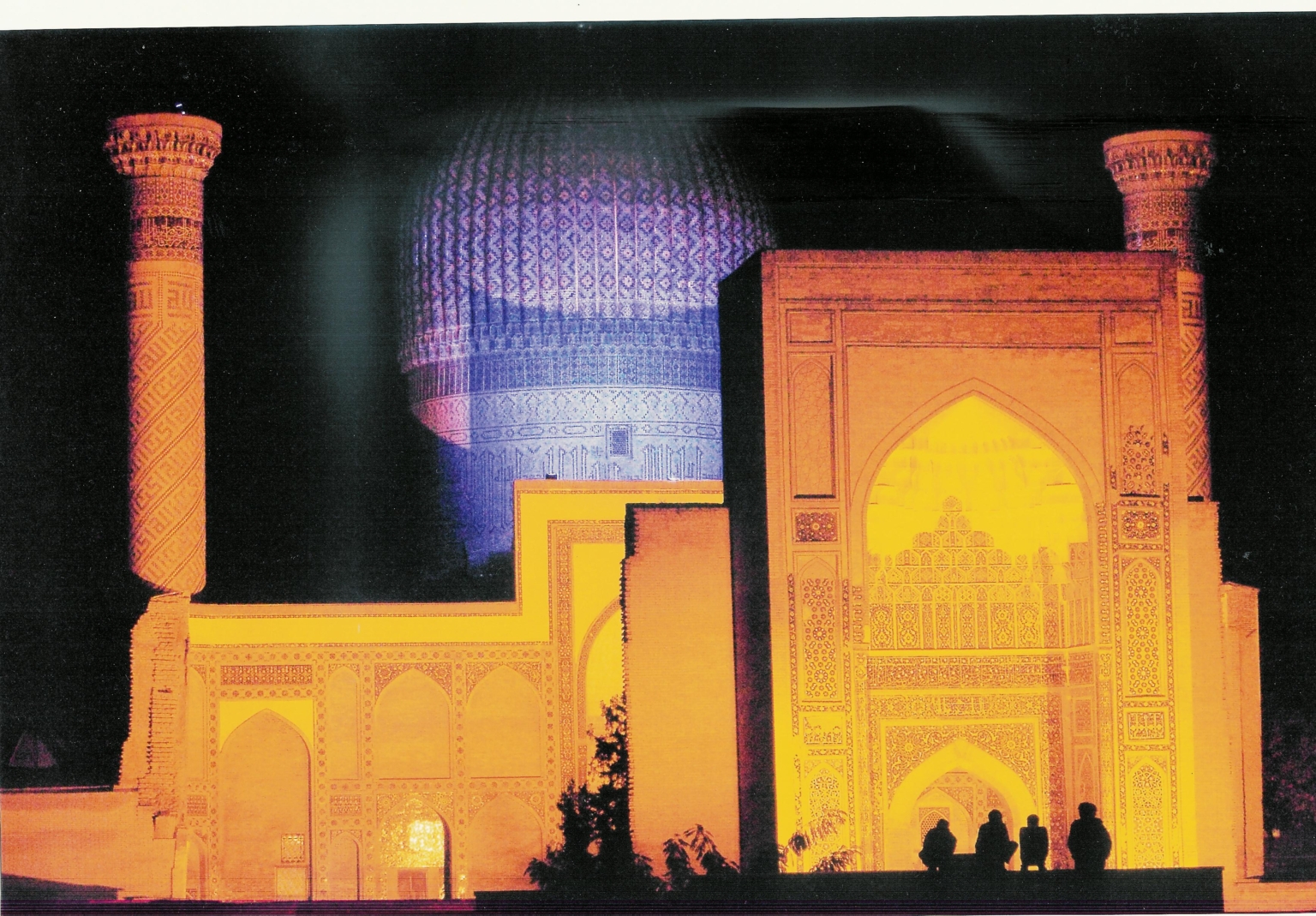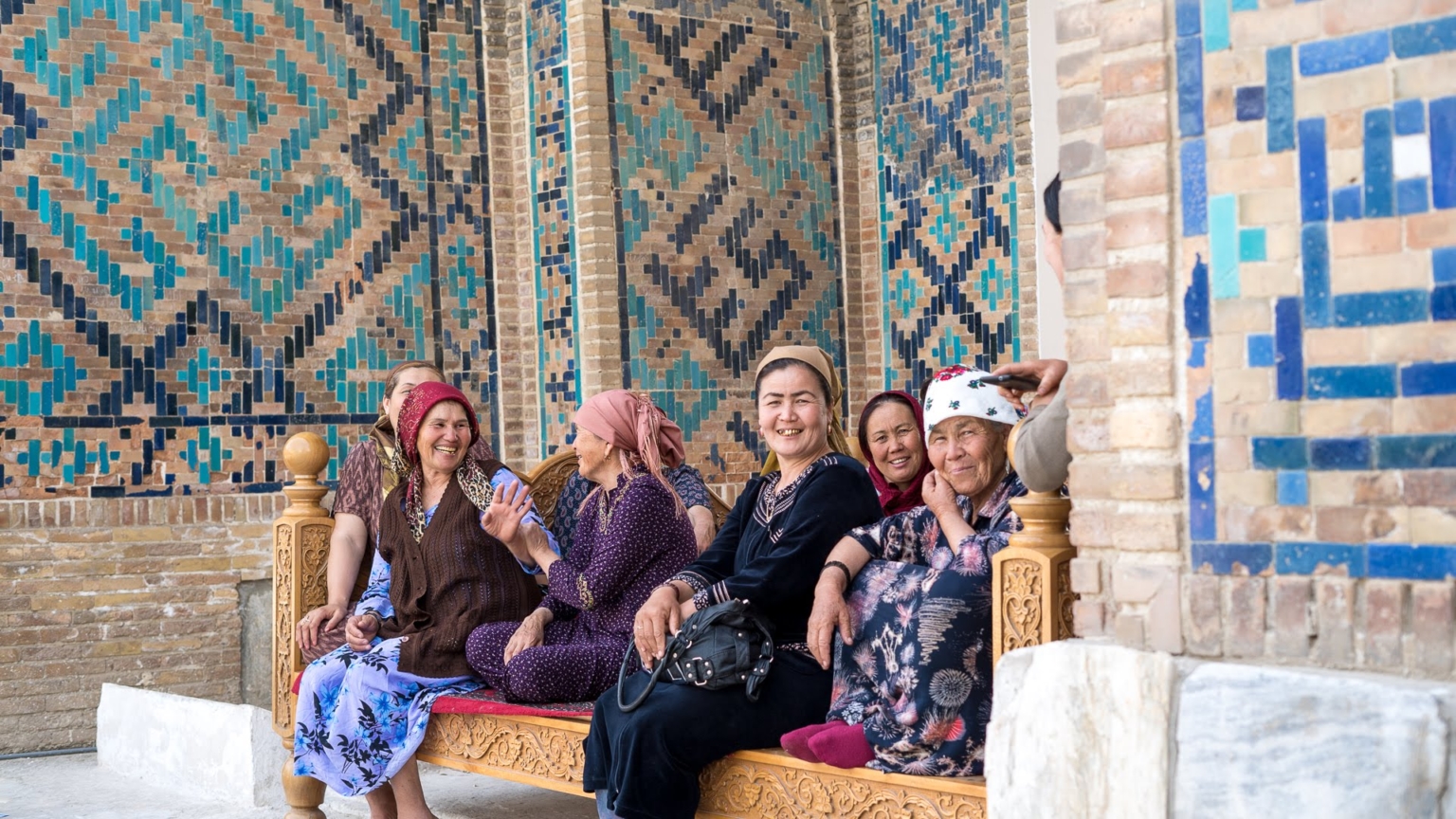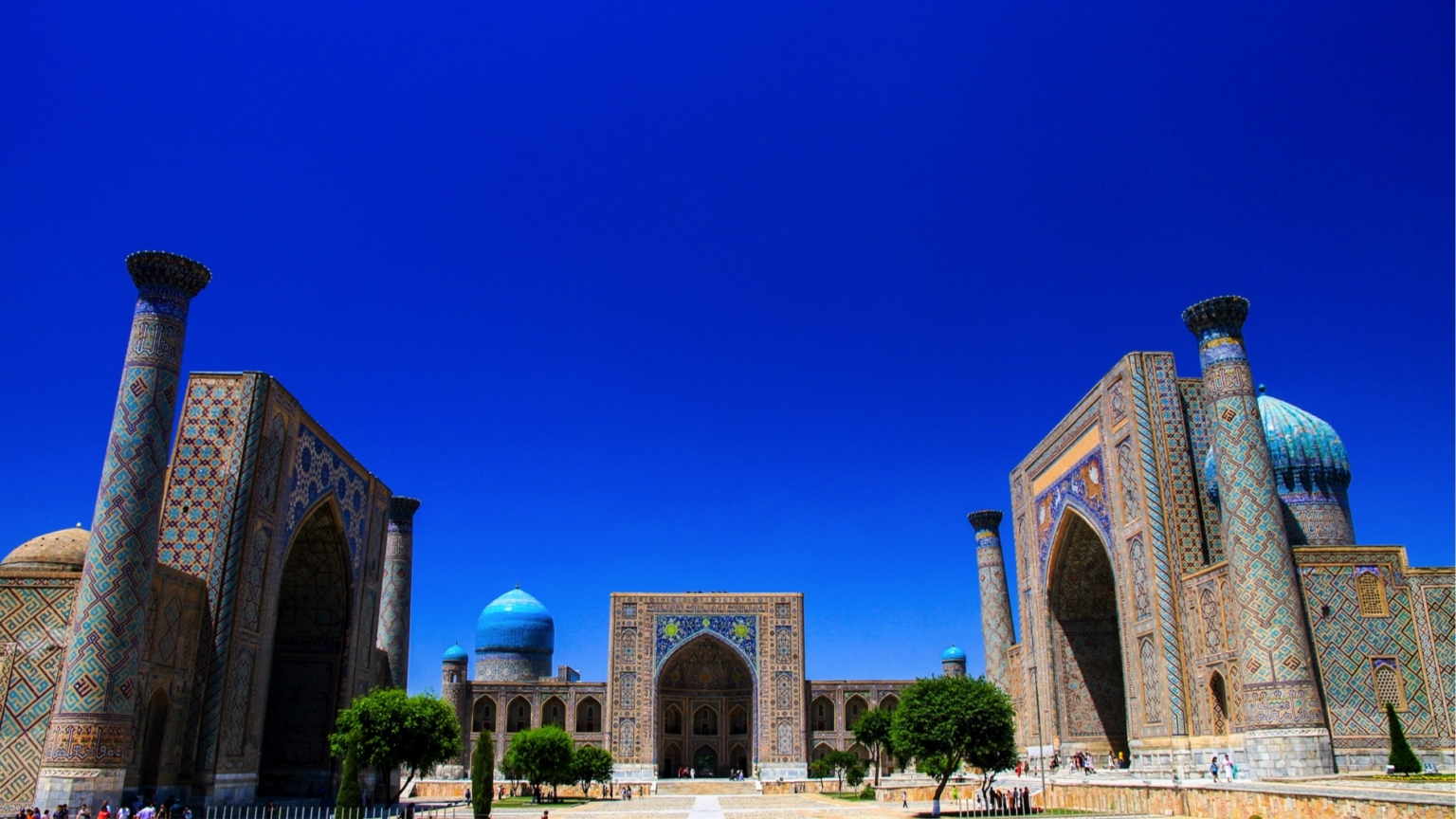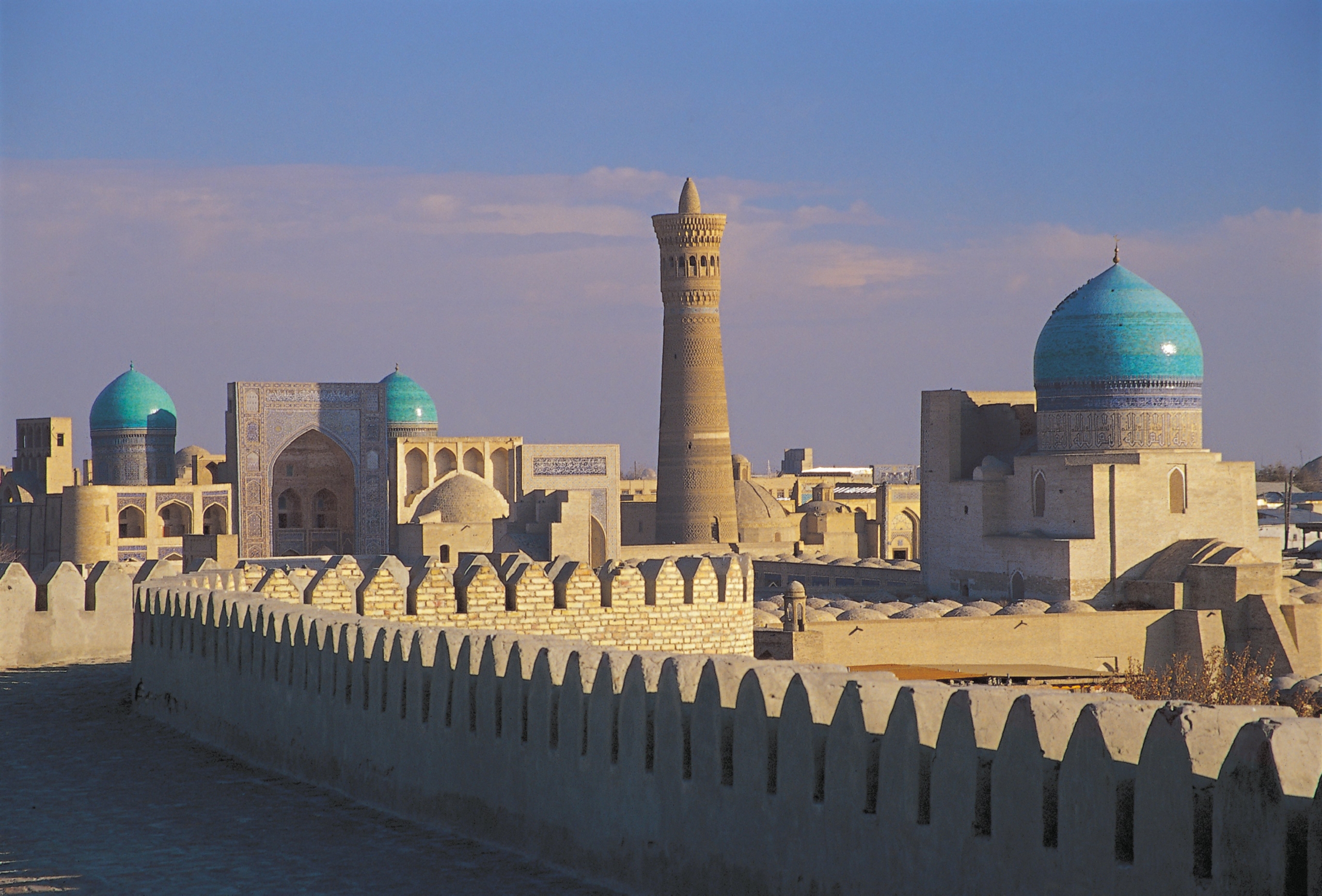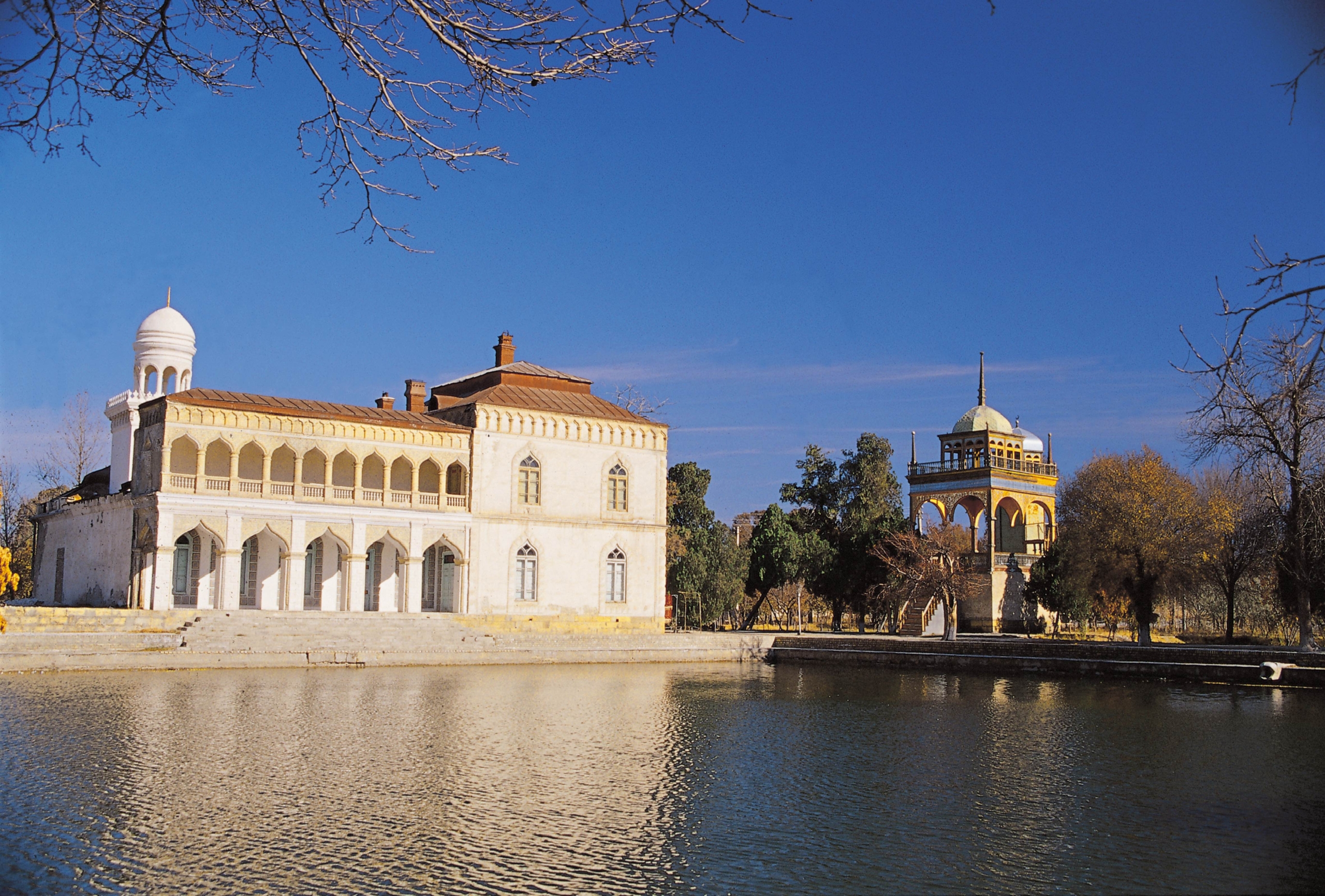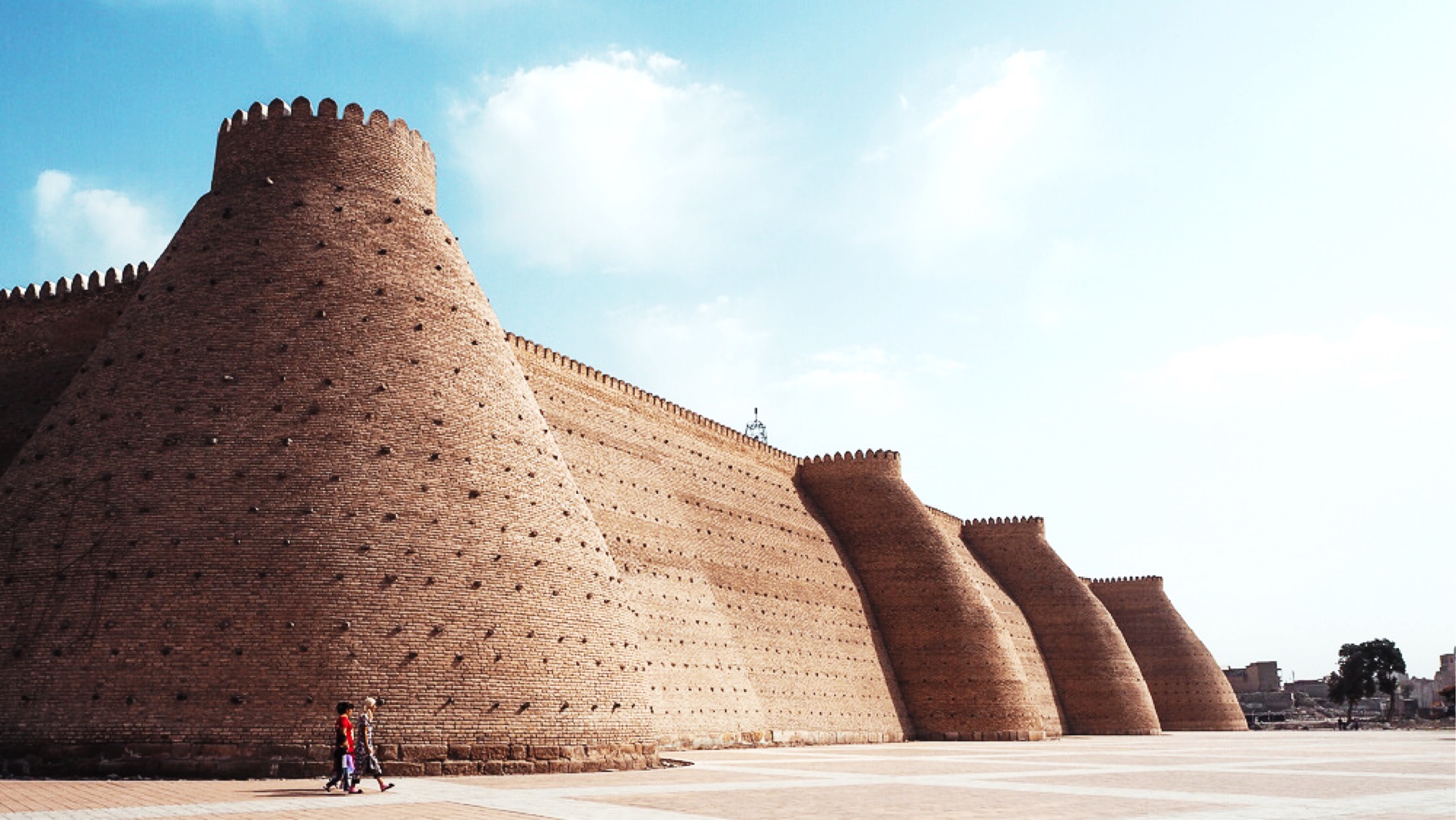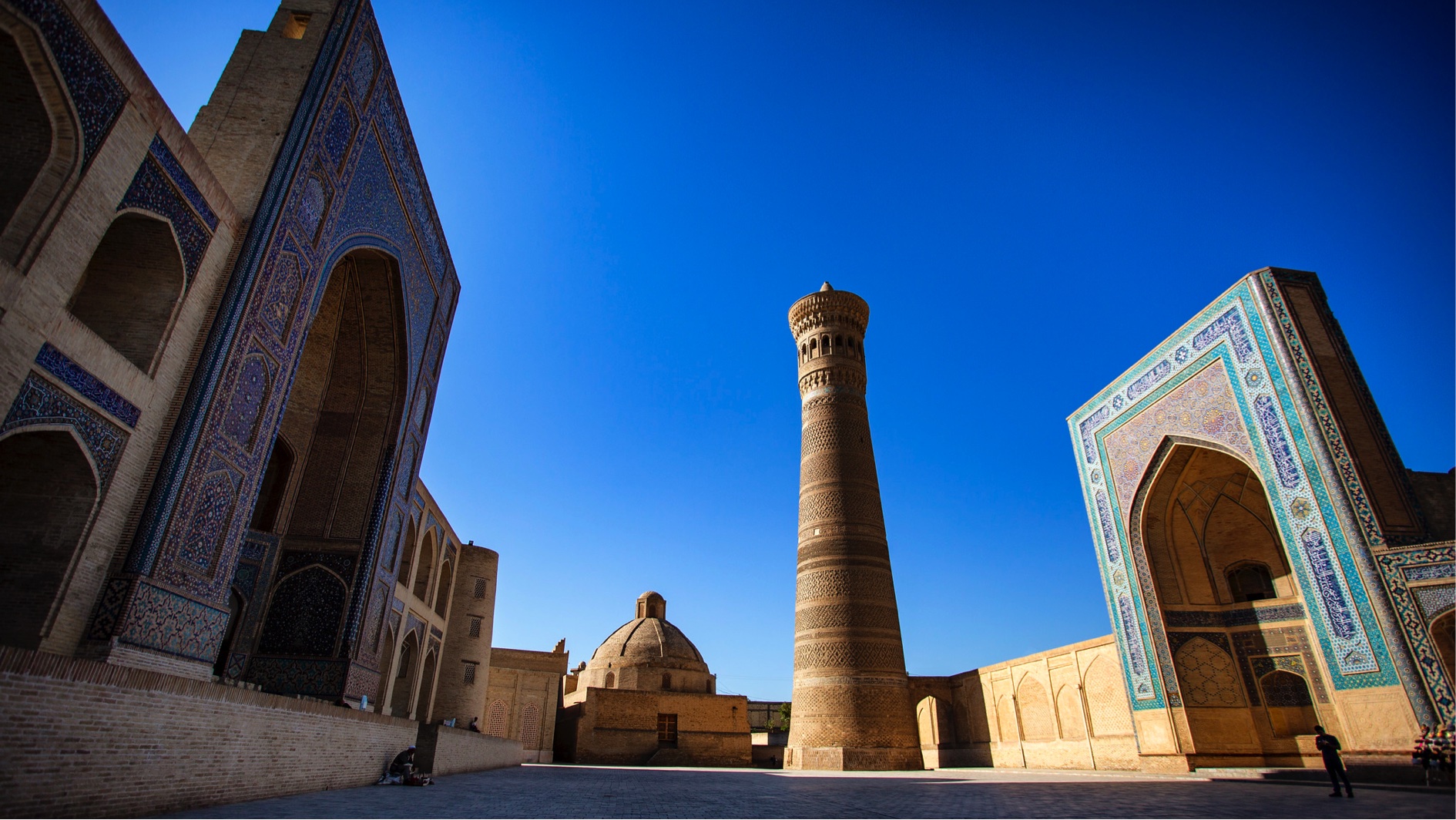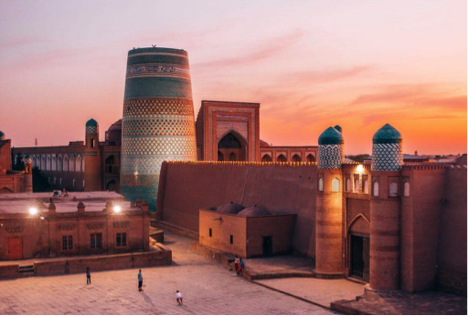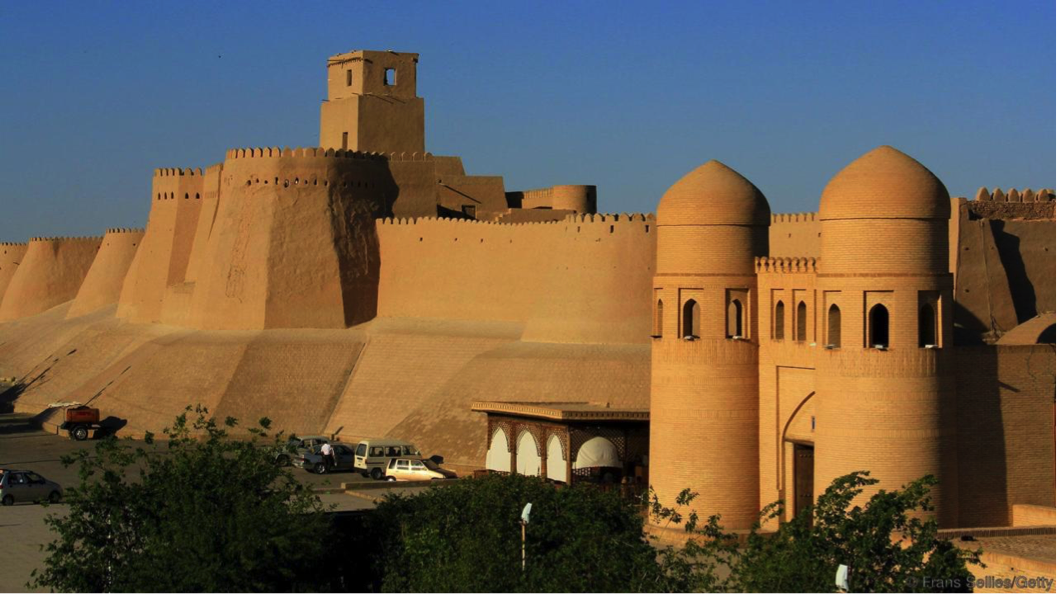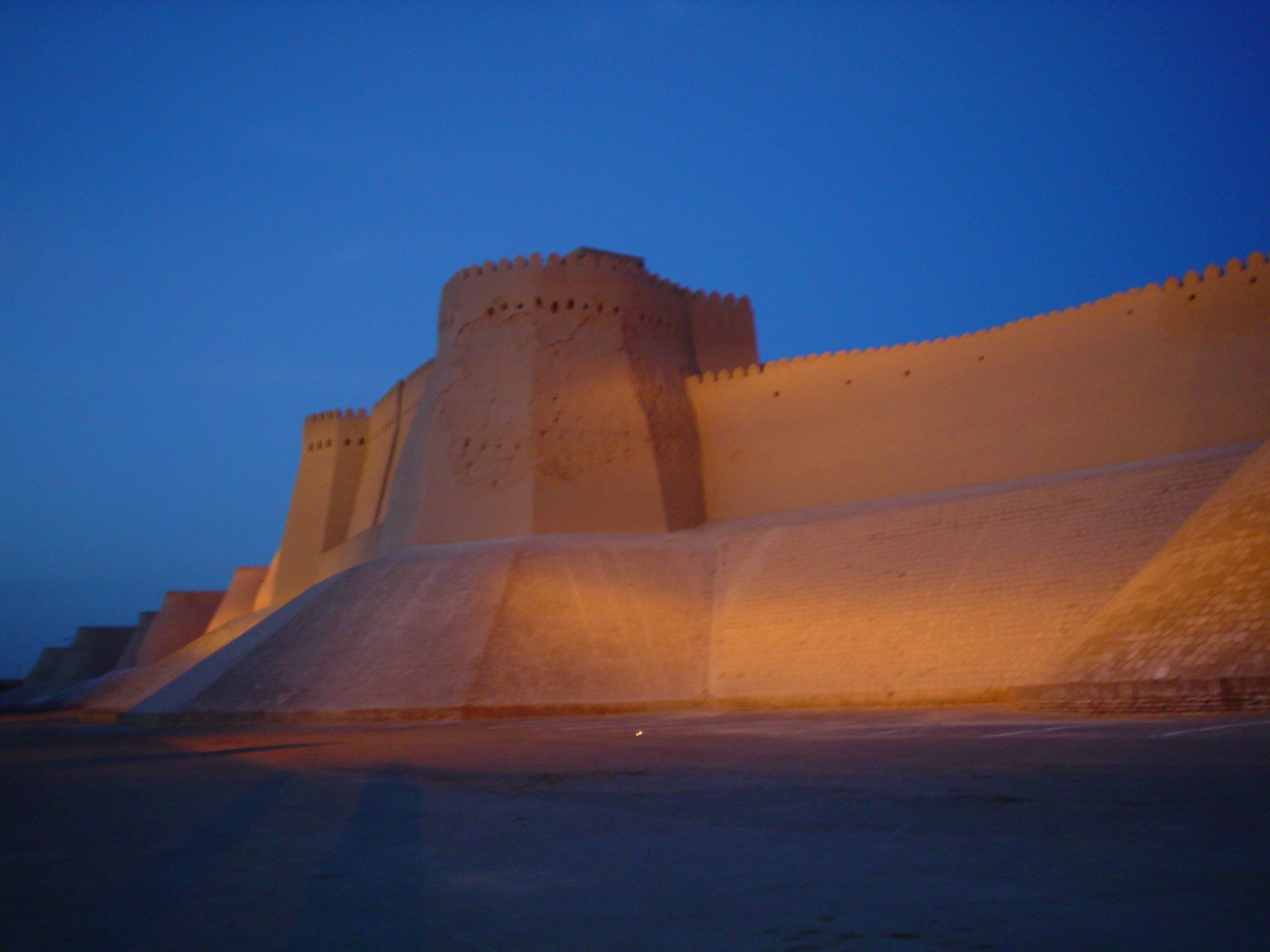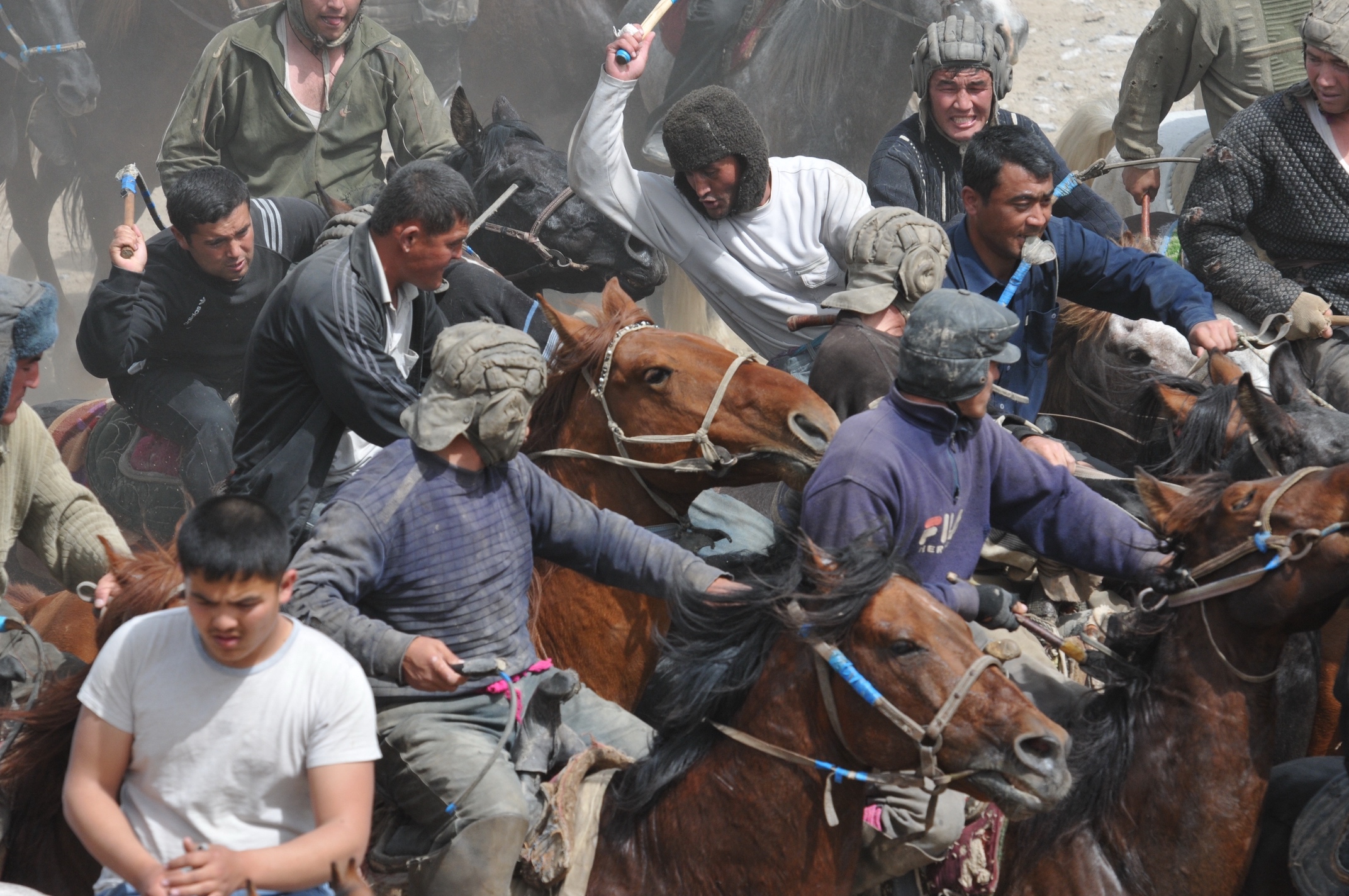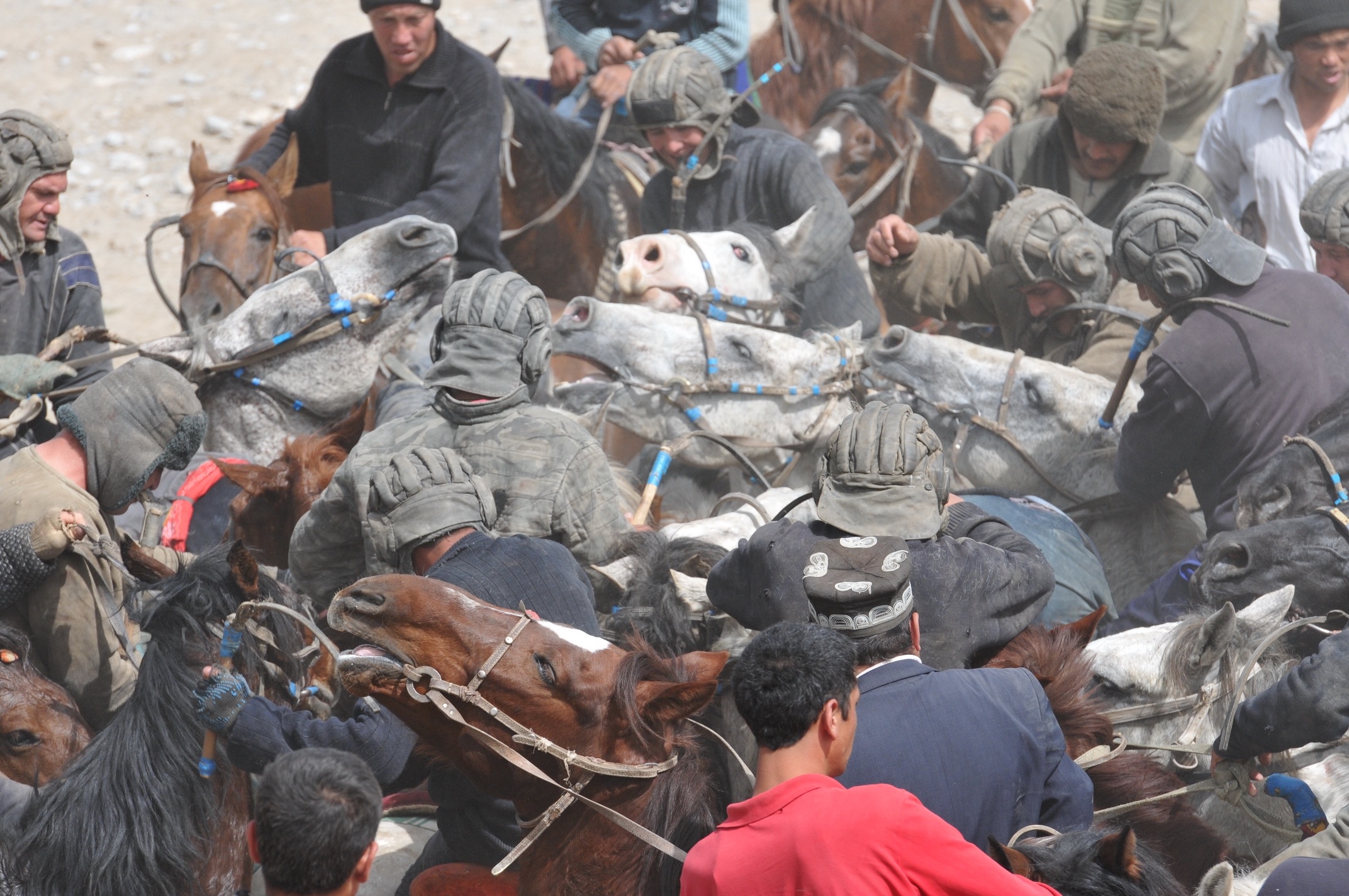Negina Muthtarova
Samarkand & Silk Road
Ever since James Elroy Flecker and his poem Golden Journey to Samarkand written in 1913 the name Samarkand causes a yearning to go forth and discover the distant Orient.
Samarkand the city of turquoise domes was at the very centre of the fabled Silk Roads with its origins tracing back to the 7th centaury BC.
Tamerlane (1336-1405) who was a descendent of Genghis Khan, but a Turkic-speaking and steeped in Persian and Islamic culture was it’s main architect. Most of its emblematic monuments date from this golden Timurid period. The Gur Emir is his tomb. A mere 10 minutes away is the Registan perhaps the architectural piece de resistance of the city and a bit further down the Bibi Khanun Mosque. Finally but probably the most spectacular is the Shah-i-Zinda.
A UNESCO World Heritage site, Samarkand represents with the most significant stages of Central Asian cultural and political history. More modern but as exciting is the Siob Bazar. A very recent addition to the city is the Silk Road Samarkand complex, the Eternal City with a 3500 seats Convention Centre, exhibition Halls and 8 hotels including two in the 5 star category built along a canal.
Bukhara
The historic centre of Bukhara is more than two thousand years old. It is one of the best examples of well-preserved Islamic cities of Central Asia of the 10th to 17th centuries, with an urban fabric that has remained largely intact. Bukhara, at the crossroads of ancient trade routes was one of the largest cities of central Asia. Its urban layout and buildings had a profound influence on the evolution and planning of towns in a wide region of Central Asia. But even more important one must remember that between the 9th and 16th centuries, Bukhara was the largest centre for Muslim theology, particularly on Sufism, with over two hundred mosques and more than a hundred madrasas. There are medusas in Bukhara, built in the 1500s, which still have students today.
This historic part of the city, which is in effect an open-air museum, combines the city’s long history in a single ensemble. UNESCO, in naming Bukhara a World Heritage site, states: “It is the most complete example of a medieval city in Central Asia, with an urban fabric that has remained largely intact.” It exudes a beguiling, old-world atmosphere.
Walk around the area for a fist discovery of Bukhara which was a teeming commercial centre during the heyday of the Silk Road, the trade domes where the visitor can test his or her bargaining skills.
Khiva
This walled city dates from the 10th century. It is an open-air architectural, cultural, and historical museum. Of course it is one of Uzbekistan’s UNESCO-listed treasures.
Khiva is not old if one goes by Samarkand and Bukhara standards but it’s the city that gives you the impression of a step back into mediaeval times.
Visiting Khiva is to wander on foot around the city. The idea is to ambled through the labyrinth of narrow mud-walled alleyways and admire the spectacular blue ceramic tiles embedded in the buildings’ outer walls, the sculptured doors, visit the many monuments with pauses at the Mirzaboshi teahouse, centrally located! All this surrounded by crowds of local visitors who often outnumber the foreign visitors. With a bit of luck one can come upon a local wedding crowd: a bride in a full-blown white meringue dress, train, tiara and all with her tuxedoed groom.
Bushkashi & Yurt Camp
Once we quit the main road between Samarkand and Bukhara, the countryside changes totally and the vast expanse of the steppe appears with our camp at the end of the road. Yurts have been in use at least since the 13th century, and there are indications that the design is much older. Possibility of organising an exclusive Bushkashi (not possible between mid May till mid September because of the heat). A local version of polo with 50 cavaliers this is probably one of the few places in the world where you can still witness this spectacle. Described by Kessel in his emblematic book “Les Cavaliers”, the Bushkashi is an Afghan equestrian game. Bushkashi is often compared to polo. Both games are played between people on horseback, both involve propelling an object toward a goal, and both get fairly rough though Bushkashi far more so. Competition is typically fierce. Riders usually wear heavy clothing and head protection against other players with whips and boots. The boots usually have high heels that lock into the saddle of the horse to help the rider lean on the side of the horse while trying to pickup the “ball’ which is the headless carcass of a goat. The goal of the game is simply to grab the carcass, go around a flag or marker at one end of the field and then throw it into a scoring circle (the “Circle of Justice”) at the other end. Horses used in Bushkashi also undergo severe training and are considered very precious by their owners the riders carry a whip, often in their teeth, to fend off opposing horses and riders.




